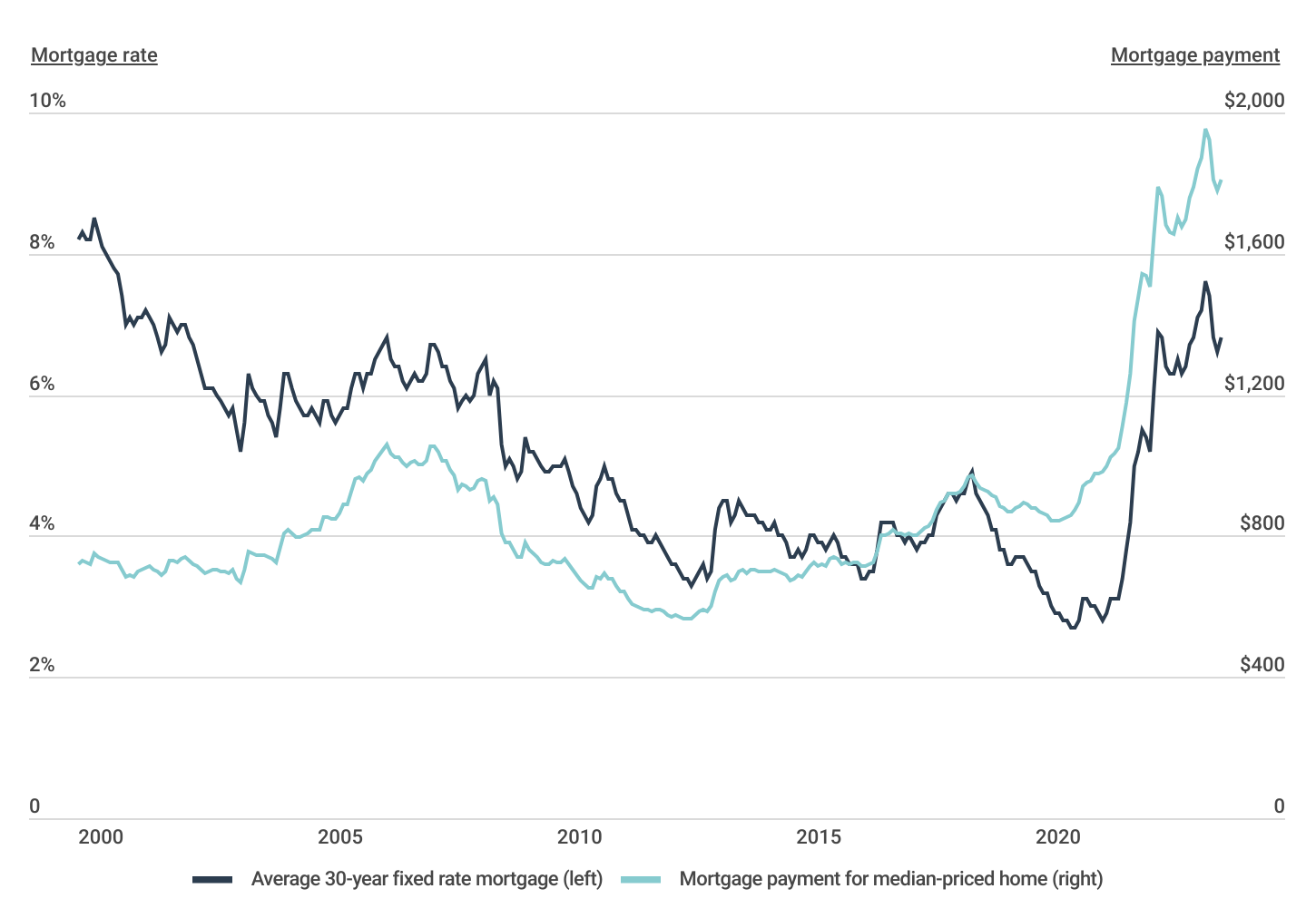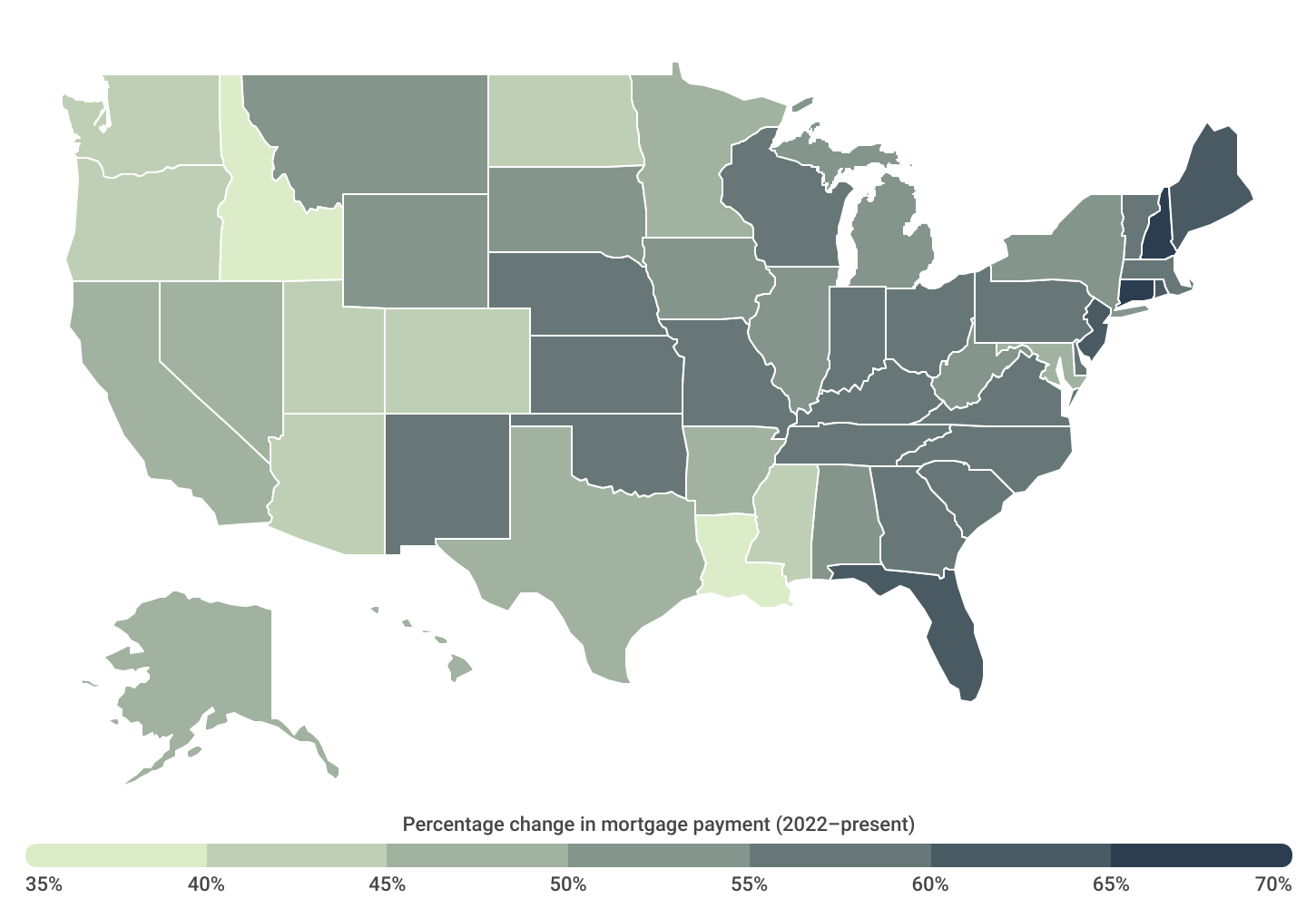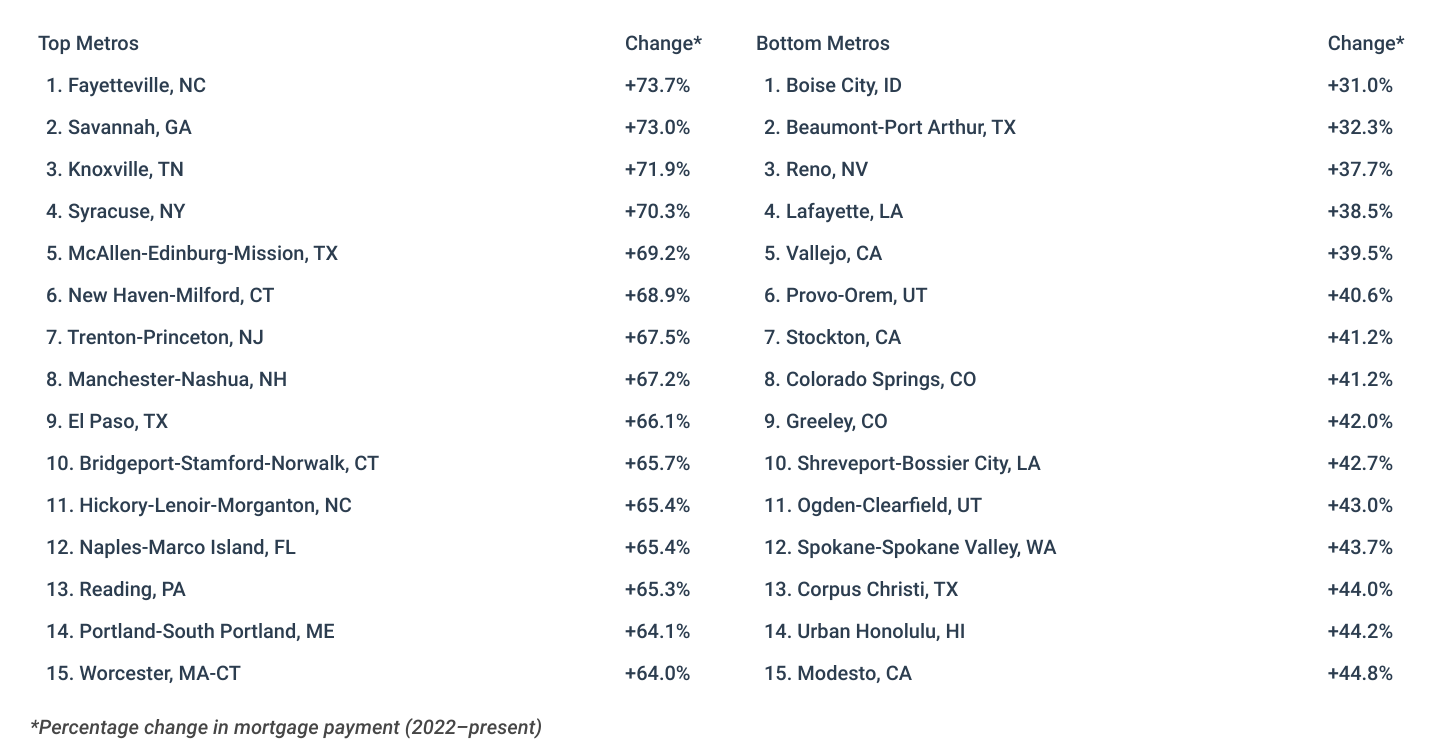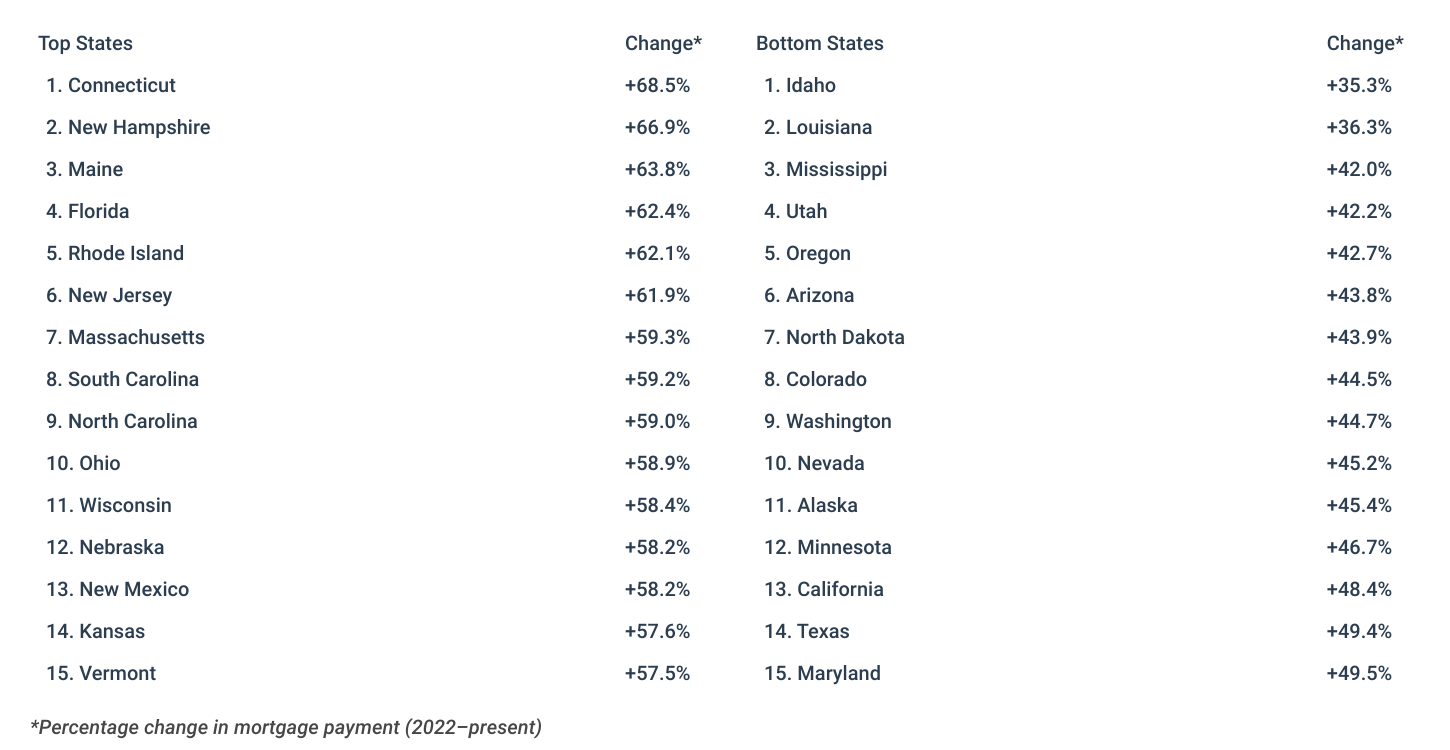The path to homeownership has been a tumultuous one for prospective buyers in recent years, characterized by a series of fluctuating trends and economic uncertainties. While buyers benefited from historically low interest rates early in the pandemic, they also faced record price increases due to constrained inventory and intense competition. Now, the landscape has shifted, but not in ways that have provided much relief.
Although high interest rates have moderated home prices to some extent, the adjustments have not proven sufficient to counterbalance the heightened borrowing costs associated with these elevated rates. Compounding these challenges is the enduring scarcity of housing inventory, which persists across various cities, thereby sustaining relatively high price levels and perpetuating affordability concerns for aspiring homeowners.
The result? The estimated monthly mortgage payment for a median-priced U.S. home is about 54% higher today than it was just two years ago.
Trends in U.S. Mortgage Rates & Payments
Despite inching down in recent months, mortgage rates and payments remain at near-record highs

Source: Construction Coverage analysis of Freddie Mac and Zillow data | Image Credit: Construction Coverage
It’s been more than two decades since homebuyers in the U.S. faced interest rates comparable to current levels. Despite a slight decline from its late 2023 peak of 7.8%, the average 30-year fixed mortgage rate today of approximately 6.8% remains at the highest level since 2002 and more than 2.5 times higher than the record lows of early 2021. While this uptick has led to a slight decrease in home prices, the reduction has not been significant enough to offset the increased borrowing costs associated with the higher rates.
For perspective, over the past two years, average mortgage rates climbed 80%, from 3.8% to 6.8%. At the same time, median home prices rose from $316,778 to $347,716. Taken together, this has resulted in the monthly mortgage payment for a median-priced home growing by $634, from $1,175 to $1,809.
Where Buyers Are Most Impacted by High Mortgage Rates & Prices
Homebuyers on the East Coast face some of the sharpest increases in mortgage payments

Source: Construction Coverage analysis of Freddie Mac and Zillow data | Image Credit: Construction Coverage
While mortgage rates are up nationally, the impact on home prices has varied regionally. For instance, many western states such as California and Arizona witnessed pronounced declines in prices between 2022 and 2023, followed by more moderate increases over the past year. Conversely, numerous East Coast states saw less significant or negligible decreases in prices during the same period, with continued growth over the past year.
Consequently, prospective buyers on the East Coast confront some of the most substantial hikes in mortgage payments when comparing early 2024 to the corresponding period in 2022. In states like Connecticut, New Hampshire, Maine, Florida, Rhode Island, and New Jersey, estimated monthly mortgage payments for median-priced homes have surged by over 60% during this two-year span.
Conversely, buyers in select parts of the South and West have experienced comparatively modest increases in mortgage payments since 2022. Notably, Idaho and Louisiana stand out as the only states where estimated mortgage payments rose by less than 40% during this time. However, it is worth noting that many states with slower increases over the past two years are those that had more significant price increases early on in the pandemic—between 2020 and 2022. Consequently, their slower growth since 2022 is unsurprising given the earlier surge in prices.
Below is a complete breakdown of estimated monthly mortgage payments for more than 370 U.S. metropolitan areas and all 50 states. The analysis was conducted by Construction Coverage, a website that provides construction software and insurance reviews, using data from Freddie Mac and Zillow. For more information on the analysis, refer to the methodology section below.
Large Metros Most Impacted by High Interest Rates

Midsize Metros Most Impacted by High Interest Rates

Small Metros Most Impacted by High Interest Rates

States Most Impacted by High Interest Rates

Methodology

Photo Credit: fizkes / Shutterstock
To determine the locations where homebuyers are most impacted by rising interest rates, researchers at Construction Coverage analyzed the latest data from Zillow’s Zillow Home Value Index (ZHVI), a measure of typical home value, and Freddie Mac’s Primary Mortgage Market Survey. The researchers ranked metros according to the percentage change in the hypothetical monthly mortgage payment for a median-priced home between February 2022 and February 2024, factoring in changes in mortgage rates and home prices. In the event of a tie, the metro with the largest total change in mortgage payment was ranked higher. The monthly mortgage payments were calculated by assuming a 30-year fixed rate mortgage with a 20% down payment.
To improve relevance, metropolitan areas were grouped into the following cohorts based on population size:
- Small metros: Less than 350,000
- Midsize metros: 350,000-999,999
- Large metros: More than 1,000,000
For complete results, see U.S. Cities Most Impacted by High Interest Rates on Construction Coverage.
